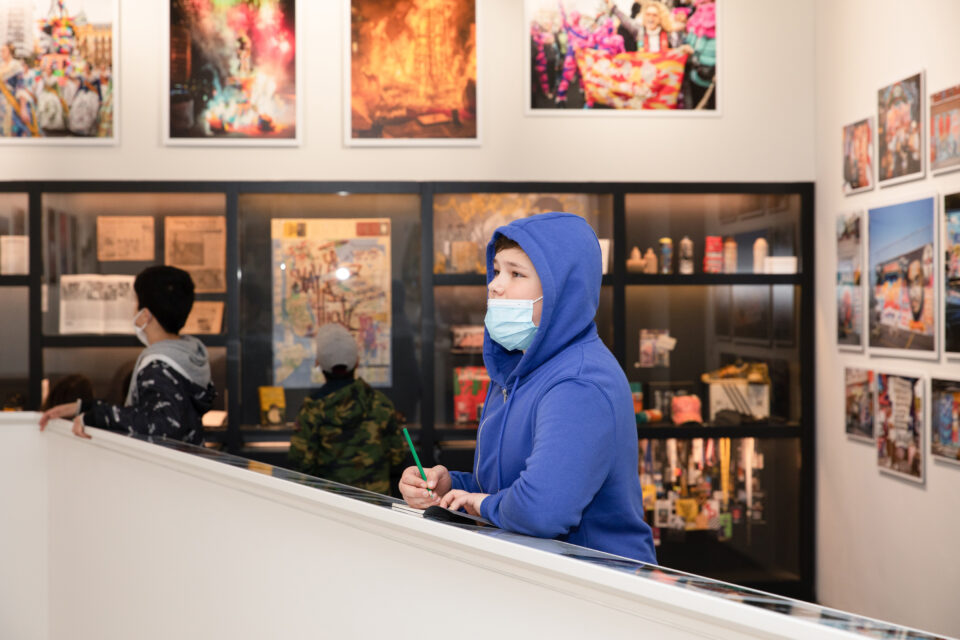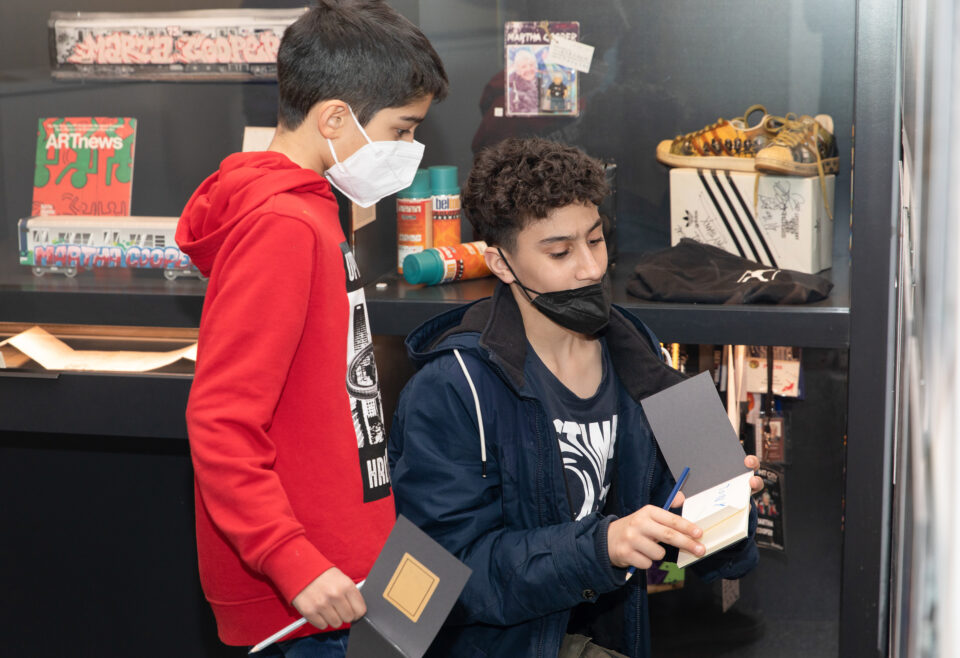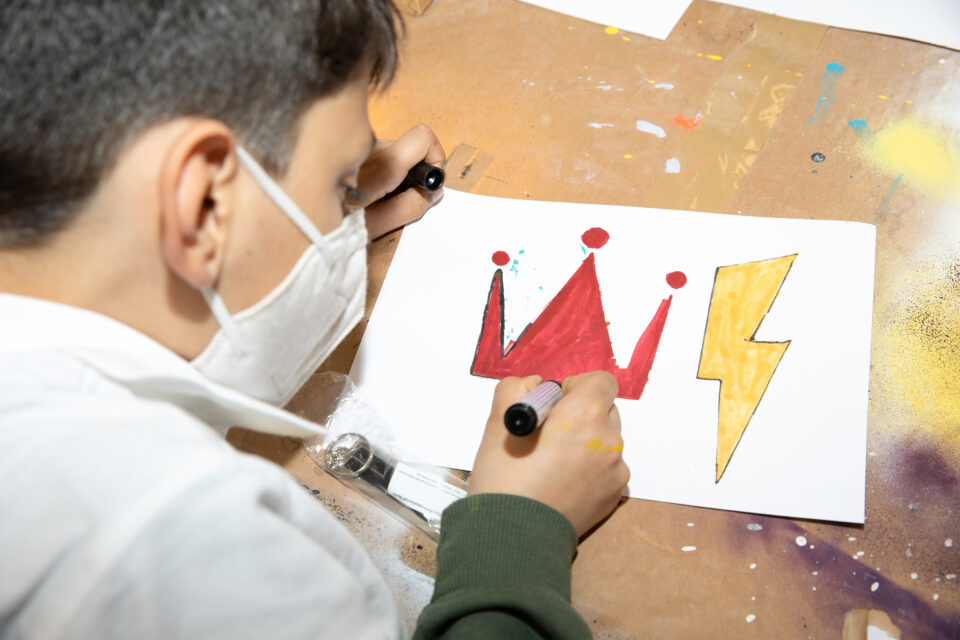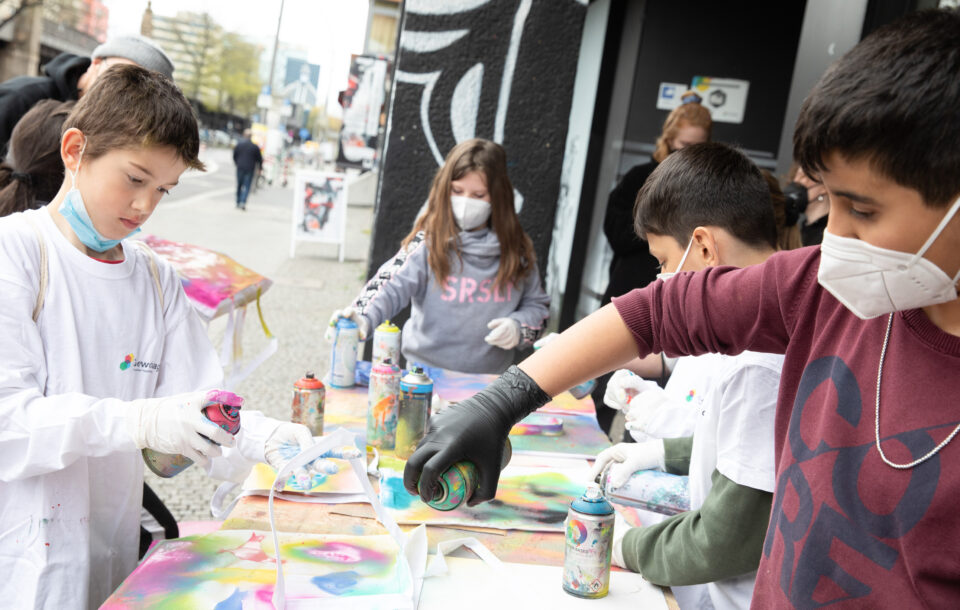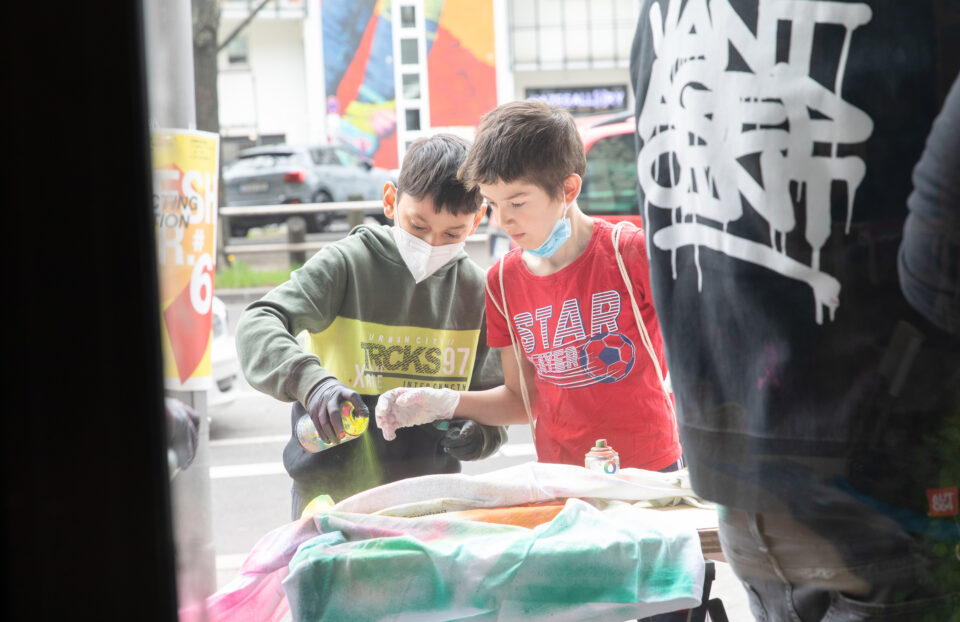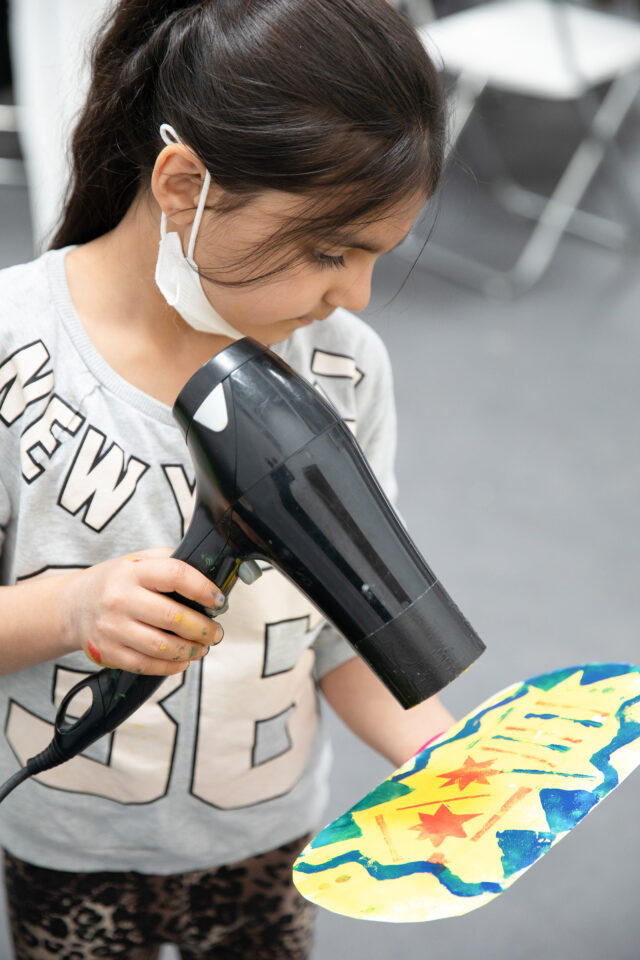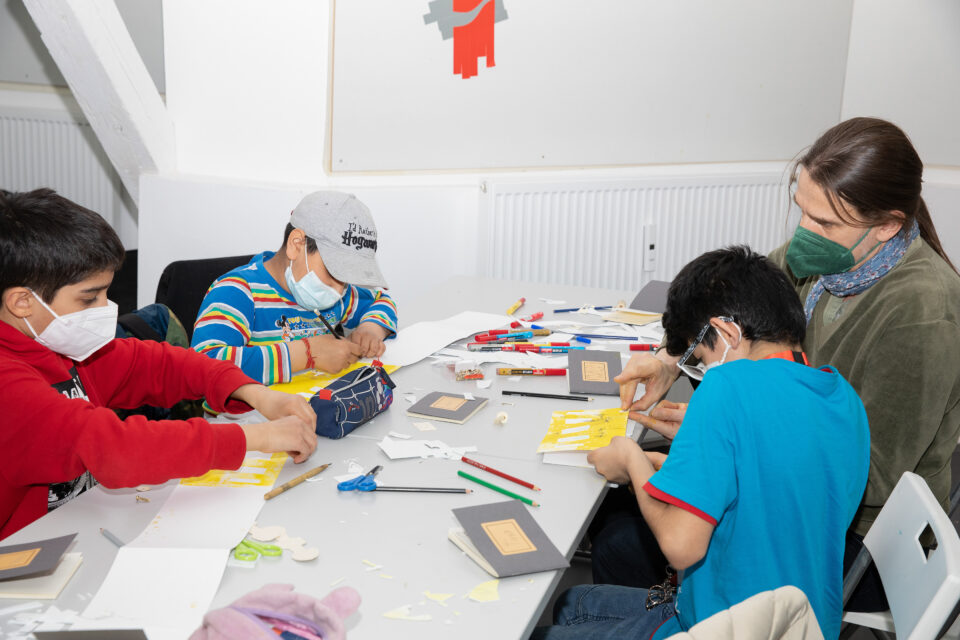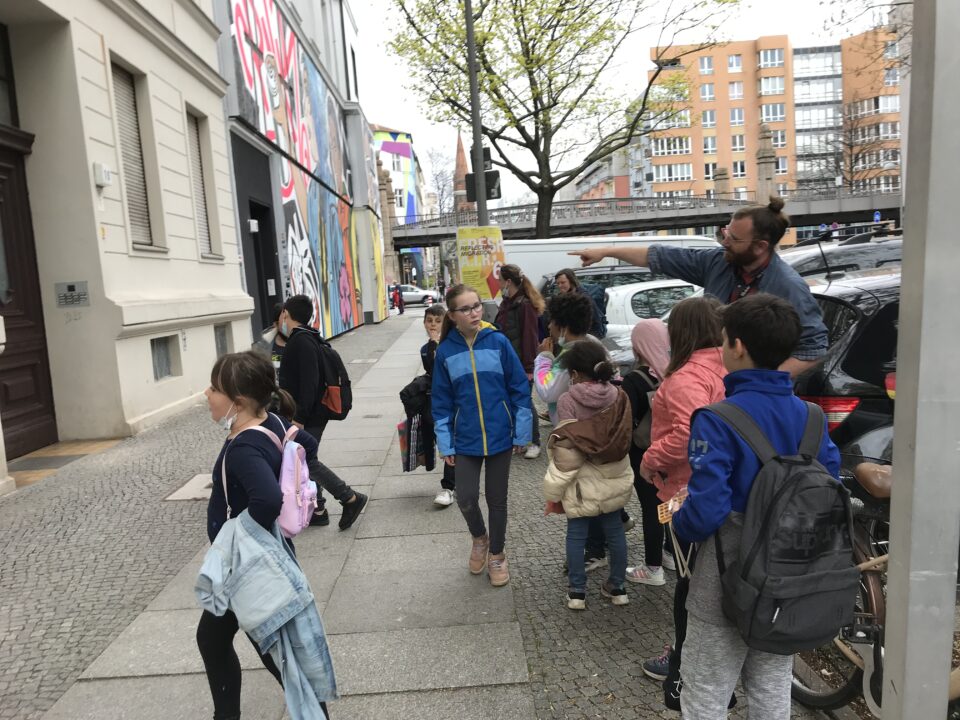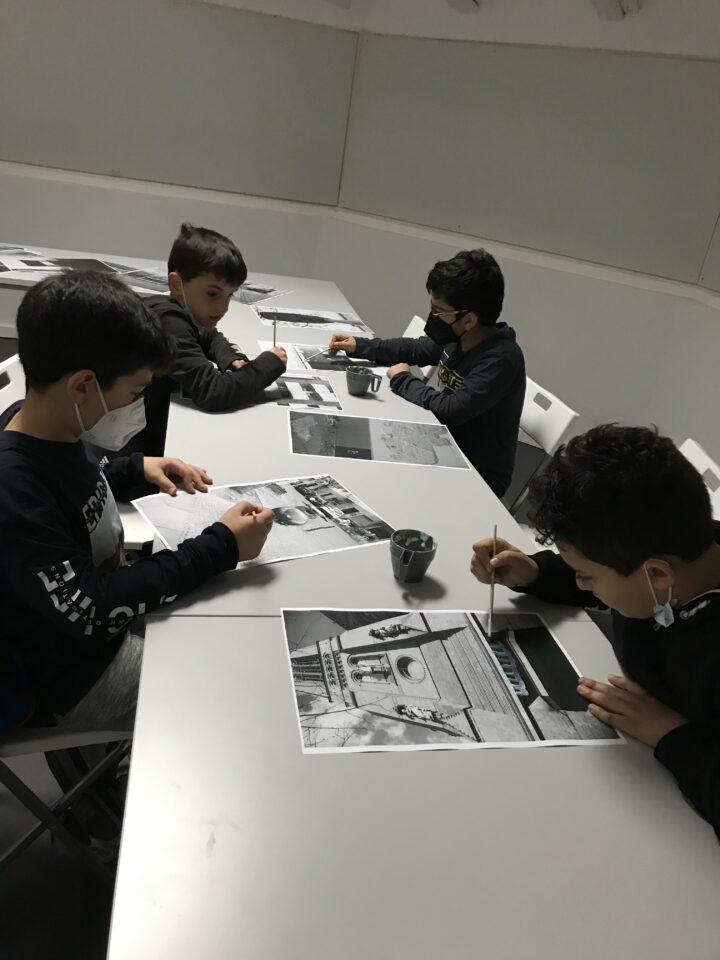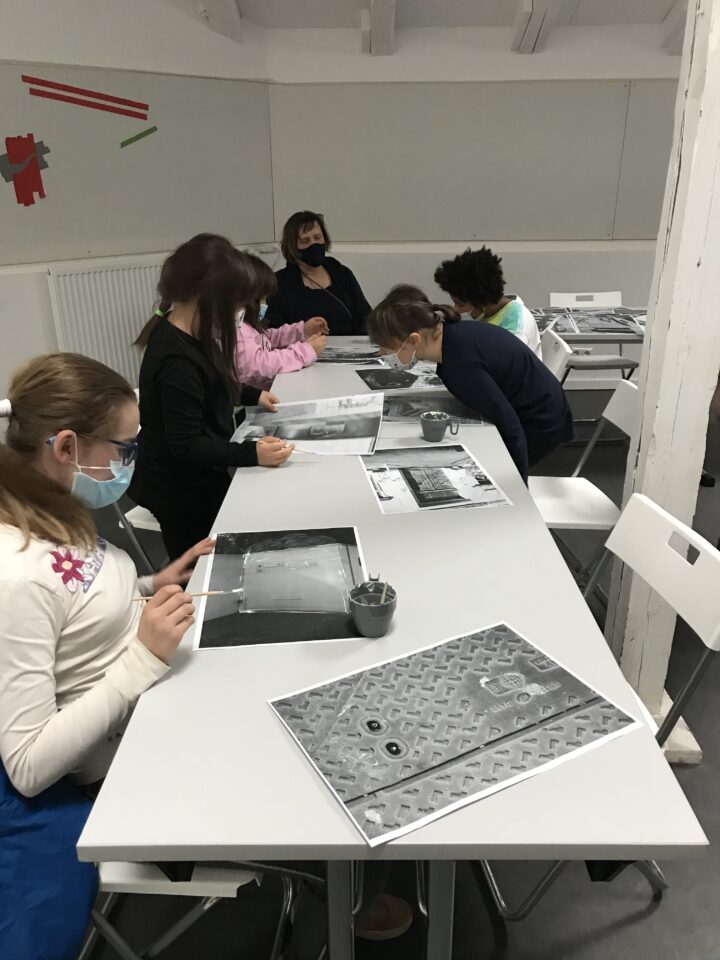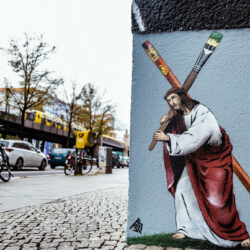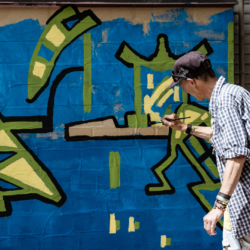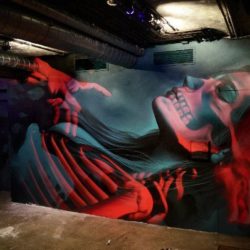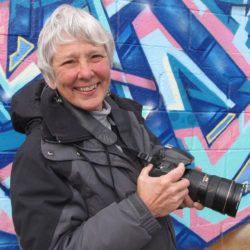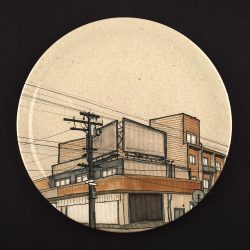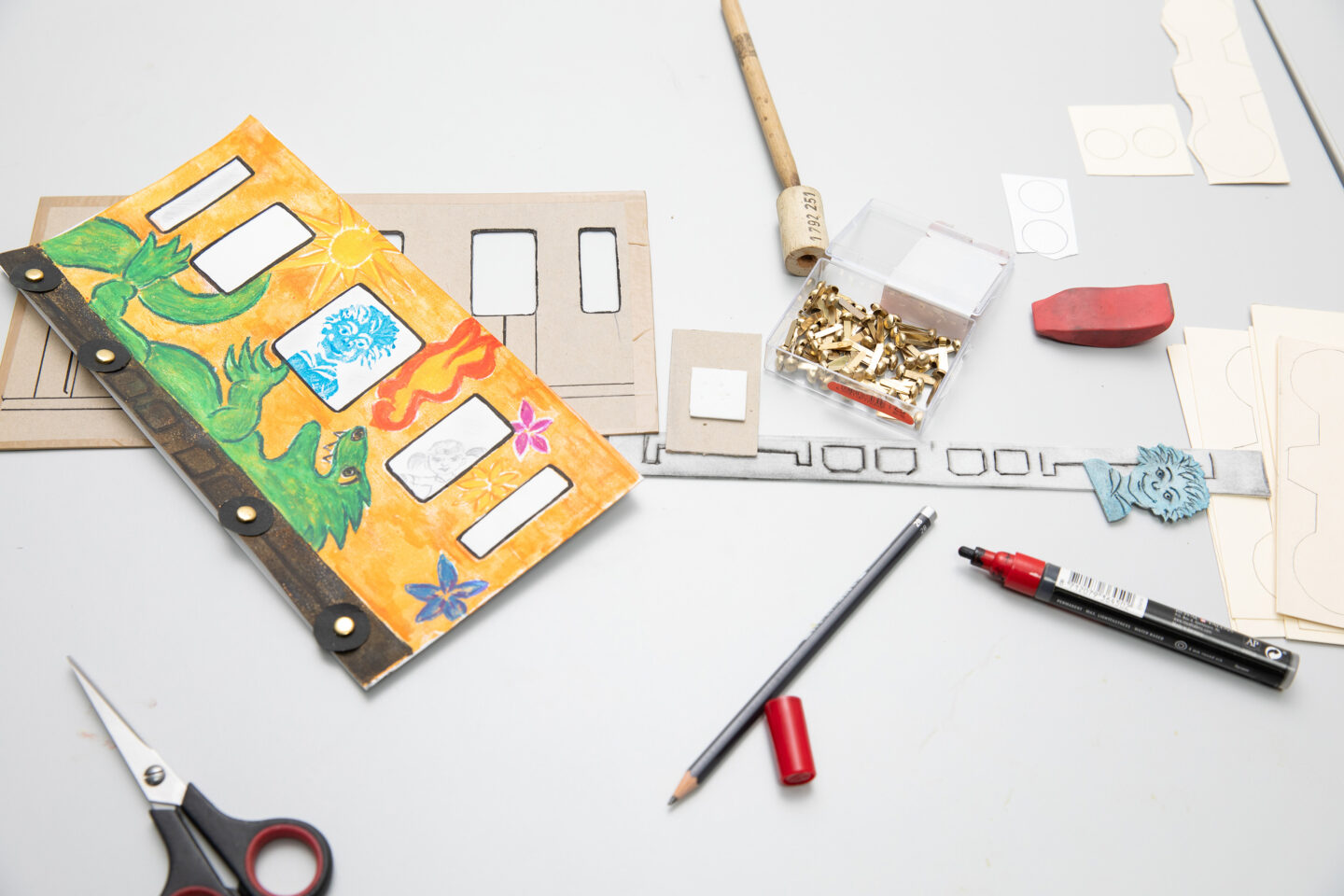
The Open Family Apartments Falkenhagener Feld West and Heerstrasse/ Maulbeerallee as Guests at URBAN NATION
- May 13, 2022
Six years ago, the concept of the Open Family Apartments in the district of Spandau was born. There, “the vision of a more just and safe life for local people” was developed. On the occasion of the fifth anniversary, the children of the neighborhood were presented with a voucher for workshops at URBAN NATION.
The groups, children of the 3rd-6th grades from both neighborhoods, came on two different days during the Easter vacations and spent eventful days.
Each child – accompanied by the pedagogical staff – was allowed to participate in two workshops, learning about graffiti and street art.
With the artist Markus Georg they learned on 14.04. how an artist works on the street and with the street – actually the principles of street art. In fact, it was about much more to him:
“And yet it exists, the soul” – recognizing faces in the everyday world – he called his workshop. First it went on the street around URBAN NATION with the task to find faces in the environment. With that, “the kids get the assignment to look at their surroundings under a special gaze to recognize facial expressions and emotions in windows, manhole covers or bike seats.” And sure enough, they were able to find them everywhere; the whole street was suddenly full of faces!
After these impressions, the children gave free rein to their imagination on paper: they were given large-format copies with photographic motifs, everyday scenes from the urban landscape: facades, sidewalks, trees and even trash cans were on hand. Faces, beings could be recognized there as well: Their discovery, the participants could now paint luminous colors that shimmer in the dark.
Only it happened: nothing could be seen in daylight. But in the dark anteroom, Markus Georg was able to surprise everyone: He briefly illuminated the leaves with a flash and had one of the children immediately turn off the light: Cries of surprise and joy rang out: The faces glowed unmistakably in the dark! The children were not only allowed to take their work home with them. After Markus Georg had photographed all the painted copies, he sent funny GIF animations that switch from day to night version.
“In street art, public space plays a big role and is also reflected and taken up by the children here,” the artist explained. The group also took home another message: “With the faces we were looking for today, I wanted to show you how artists work. Because for me, art means seeing the world differently, recognizing things that others don’t see at first glance. And that’s exactly what you practiced today.”
On April 20, the other group was allowed to engage with the current exhibition and then craft and design a subway or skateboard. The artist Götz Drope led them first into the exhibition, directly to the photographer Martha Cooper, and gave each child, a sketchbook: with a small introduction to her work, he showed them where graffiti and street art were created.
Shortly after, the children were now at work and were invited to choose their favorite motifs. So they spread out in the exhibition and traced in their notebook what they liked. They were to use these motifs later for the second part. In the art room, either a leporello or an imitation skateboard made of paper was waiting for them.
Like the graffiti on the New York subway in Martha Cooper’s photographs, the children could now use stencil art and pens to design their own Berlin subways with their chosen motifs.
With the artist Christian Rothenhagen all children could practice drawing, stenciling and spraying on both days. They were allowed to paint a motif on a large sheet of paper using various means: Hatching, line widths, detail highlighting, elaboration within or outside of a color area. From the artist they were able to learn how to create certain effects, to shape, to train and give free rein to their creativity: Anything can be a model – portrait, object, architecture. From this they could partially create their own stencils or use pre-made ones.
Then, in another stage, they worked in combination with form and focus. The stencils could now be used to design a T-shirt or a jute bag: After the children had placed them as desired and carefully covered the edges, they could practice spraying from water-based cans with great pleasure, find the right angle and distance, and take home their colorful creations.
Finally, the group took a look at the community wall of Bülowstraße and recognized some techniques there that were tried out that day. The children also found the stencils from the JPS Easter rally in surprising places that they now knew to look for, for example on steps. They were also amazed by the colorful city of Peter Missings and the mural with two superimposed motifs by Insane 51.
Photos: Olaf Janson/Raufeld Medien and Stiftung Berliner Leben
